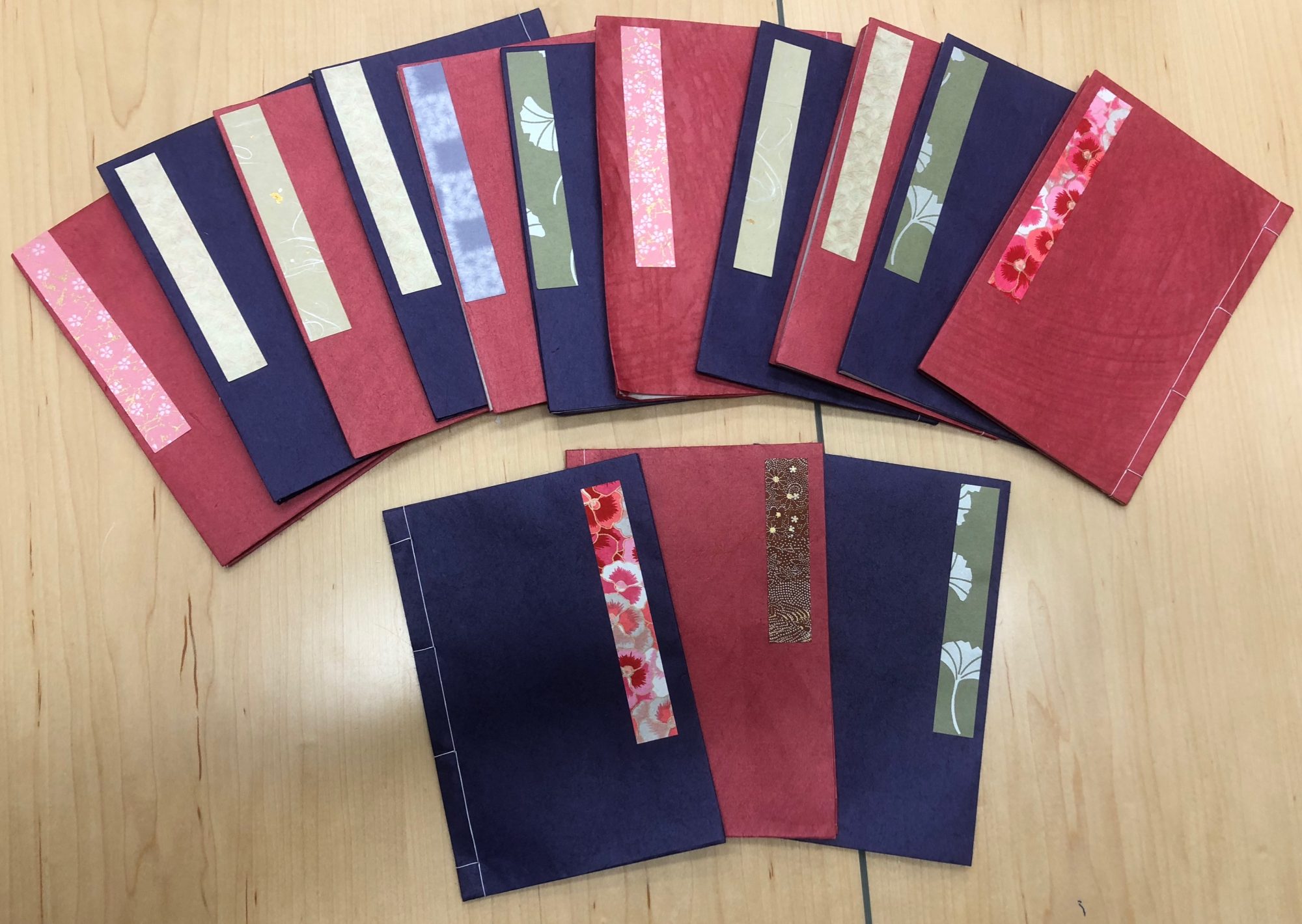Serizawa Keisuke 芹沢銈介, Sōtei zuanshū (装幀図案集), ca. 1971-73
Author: Serizawa Keisuke (Japanese, 1895-1984)
Title: Sōtei zuanshū (A Collection of Book Designs)
Date: ca. 1971-73
Medium: Multi-color and monochrome katazome print designs and illustrations
Publisher: Gohachi (Tokyo)
Call number: Z246 .S475 1971
Purchase funds contributed by: American Honda Motor Company Fund
Sōtei zuanshū is composed of three volumes. The books have a consistent format of stencil print designs inspired by traditional Japanese folk art printed on high-quality traditional paper and bound in special paper or cloth covers. This collection of prints is created from a partnership between the publisher and the artist to be a collectible art treasure that’s carefully curated by the artist himself. Volume one, “表紙十二ヶ月” (cover page of 12 months), consists of twelve multi-color calendar designs, where each month is represented by a seasonal illustration with Japanese text incorporated within. Volume two, “工藝” (crafts), contains 49 black and white print designs that incorporate the word crafts in kanji, mainly symmetrical patterns that include some motifs to nature. Volume three, “民藝と生活―微笑亭夜話” (folk craft and life – smile night talks), comprises of numerous monochromatic prints with red, green, and yellow ink painted over some. The key print subjects are everyday objects that demonstrate various aspects of folk art life, such as tea kettles, lanterns, clocks, paper puppets, patterned cloth, chairs, weaving machines, etc. Attached to each volume was a paper note from the author. Serizawa describes how he was very sick and in the hospital when he put these books together and is very content with the completion of his last efforts. He also describes in detail the process of how the book was made including the use of plastic, cutting techniques, and others.
Serizawa Keisuke is a renowned Japanese artist, regarded as a master of stencil dyeing and a leader of the Mingei (folk art) movement in the late 1920s and 1930s. In 1956, at the age of sixty-one, he was named a “Living National Treasure” by the Japanese Government. His combination of two textile dyeing techniques, bingata of Okinawa and Japanese ise katagami, created his own style of katazome stencil dyeing. His katazome print process was used for kimono fabric, screens, wall hangings, fans, scrolls, calendars, shop curtains, quilt covers, prints, and the like. Although Serizawa passed away at the age of eighty-nine in 1984, his traditional craft is continued by his apprentices.
The collection is issued in limited editions of 180 copies, each in portfolios with one explanatory booklet inserted in each volume. Van Pelt library carries edition number 176.
Posted by Carissa An-Chi Teng
April 2nd, 2018




